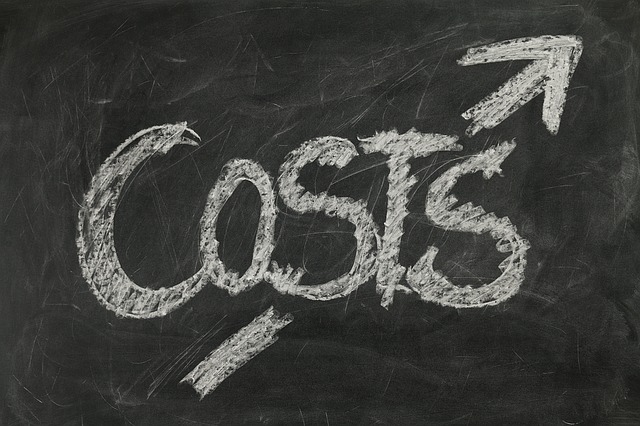What is Predatory Lending?
A few bad apples have given payday loans a rotten name. However, a small-dollar loan from a reputable lender is sometimes the only way a borrower can fund an emergency expense. We'll show you how to avoid predatory lending and how to take advantage of shorter-duration loans from a trusted lender.
What is a predatory loan? It is funding offered at usurious rates designed to trap borrowers in a cycle of debt. There are no pros to this type of credit and it should be avoided.
The financial marketplace is filled with lenders who act in bad faith. They look for people down on their luck and try to ensnare them in an unaffordable loan, hoping they’ll have to extend the credit and take on more fees.

Here is an example of predatory lending that shows what it’s like to get trapped in a cycle of debt:
- A consumer seeks a small loan of $200 to cover an unexpected expense
- A lender offers the customer $1,000 at 700% APR
- The consumer accepts the money, planning only to use $200 and pay the rest back as quickly as possible to avoid interest
- The consumer ends up not being able to pay off the loan on time
- The lender offers to let the consumer roll the loan over into a new loan with added fees
Predatory lending practices rely on charging consumers many times the original loan amount in interest and fees. These lenders never have the consumer’s best interest in mind, and it is always best to avoid them.
How to Get Out of a Predatory Loan
When looking for a payday loan online with no income verification, consumers may accidentally take on a usurious form of credit. For borrowers who find themselves in this situation, escape is possible. The FDIC provides predatory lending resources that can help consumers make more informed financial decisions.
Another good place to turn to is The Fair Debt Collection Practices Act (FDCPA). This statute lists unfair practices that debt collectors are not allowed to use. If a debtor is tormented, then they may be able to fight back and sue the debt collector.
If a debt collector violates the FDCPA, they could be on the hook for at least $1,000 in statutory damages. If the victim sues in state court and can prove that they suffered from the violations, then the judge may add a couple of more zeroes to that payment.
It is also possible to sue a debt collector in small claims court. This allows the consumer to argue their case without the cost of an attorney
Here are some ways that creditors can violate the FDCPA and open themselves up to a lawsuit:
- Try to collect any fee not permitted by law
- Threaten or suggest criminal prosecution
- Threaten to deposit a postdated check prior to the specified date
- Contact you before 8 a.m. or after 9 p.m., or directly if they know you have an attorney
- Threaten your reputation or property
- Harras you or threaten violence
- Use language that is profane, obscene, or abusive
- Not identify themselves as a bill collector
- Claim to be working with the government when they are not
- Claim to be an attorney when they are not
- Cash a check more than five days after its date (this is only acceptable if they let you know three to 10 days in advance)
Ideally, you should try to avoid having your loan get to a debt collector. The best way to get out of a bad loan is to pay it off quickly and avoid the debt cycle and as much interest as possible.
How to Avoid Predatory Lending
Unfair or abusive loan terms can be tough to spot. Here is what to look out for:
- Unreasonably high rates
- A loan amount much higher than requested
- Deceptive marketing
- Asset-based lending that’s based on what the consumer owns rather than their income
- Hidden fees
- Loan packing in the form of unnecessary financial products added to the loan at a cost
- Loan flipping in the way of credit refinancing at a higher rate
- Loans from unlicensed lenders
- Pressure to rush through the application process
- Prepayment penalties
Finding a trusted lender can be a tricky process, especially during a financial emergency when there is an urgent need for cash. Still, weighing one’s options can help one avoid a bad or unreliable loan.
Is Short-Term Lending Always Bad?
Despite the risk of predatory lending, there can be many benefits of opting for a payday loan online. There are many lenders who offer shorter-duration loans at fair rates.
Even those who are underbanked and looking for payday loans online with a prepaid debit card may find help.
Borrowers should remember that lenders are required to provide all loan terms in the loan agreement. Before the consumer signs, they can weigh the cost of the loan against their current finances. If the borrower can pay off the debt on time, then it may be a viable way to cover an emergency expense.
On the other hand, short-term lending and long-term debt never go well together. It’s a bad idea to use expensive loans to pay off old debt. The money borrowed will only increase the amount owed.
Why is Debt Synonymous with Misery?
While operating with a dishonest lender is avoidable, many borrowers fall into financial traps due to the emotional strain often associated with being in debt. These can include:
- tearing relationships and families apart
- robbing individuals of educational funds
- leaving families with unrealistic financial deposits
To paraphrase Mr. Micawber, the optimistic clerk from Charles Dickens’ masterpiece David Copperfield, an annual salary of $20,000 with a yearly expenditure of $19,999.99 results in happiness, while an annual salary of $20,000 with a yearly expenditure of $20,000.01 results in misery.
Fortunately, the average U.S. consumer is getting better at handling debt.
According to a recent report from the Federal Reserve, if faced with an unexpected bill for $400, 61% of consumers would cover it with savings, cash, or a credit card while 27% would sell something or borrow money. The report shows that most consumers do indeed have a plan for covering the cost of a modest emergency.





